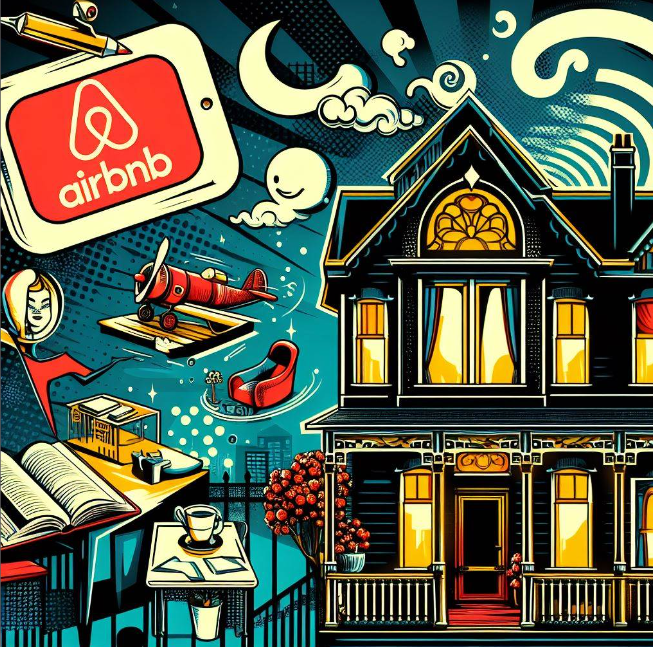- A Comparative Overview
- Webflow Features, Benefits, and Gotchas
- Framer Features, Benefits, and Gotchas
- Avoiding Vendor Lock-in
- Hosting With Tiiny.host
- Next Steps
- FAQ: Webflow vs Framer
They both launched in 2013. They compete to this day. They have similar features in common.
However, just like an architect and an interior designer have different jobs and goals, Webflow and Framer appeal to distinct audiences.
Comparing Webflow and Framer as architects and designers explains their commonalities and differences.
While both platforms attempt to lock you into designing and hosting on their turf, alternative hosting can save you time, money, and hassle.
Let’s compare the two platforms and see how to benefit from alternative hosting on Tiiny.host.
A Comparative Overview
Webflow, as the architect, is oriented towards building an entire website from beginning to end. It places a strong emphasis on design, development, and site performance. It is for web designers and developers focused on creating professional websites.
While Framer, the interior designer, is increasingly adding website production features, its primary focus is designing and prototyping user interactions. Interactive components, animation tools, data integration, preview and sharing options, and collaboration tools appeal to teams doing design validation, user experience testing, and design-to-code transitions.
So you see, although they share many of the same tools, each platform has its own focus with overlapping but different audiences.
Webflow
- Web Designers
- Front-end Developers
- Content Managers
- Marketing Professionals
- Entrepreneurs & Small Business Owners
Framer
- UI/UX Designers
- Product Managers
- Interaction Designers
- User Researchers
- Educators and Trainers in Design
Webflow Features, Benefits, and Gotchas
Providing integrated design-to-deployment workflow on a single platform is Webflow’s niche. But it’s not the only way to benefit from it.
Figma compatibility: Designers love Webflow’s simple, no-code approach to web design. It competes with Figma in the design world. You can even import Figma files using a third-party plugin. However, the process is not seamless, and manual editing is often necessary.
CMS integration: Constructing dynamic, content-rich user experiences benefits those building e-commerce, blogs, and other cutting-edge websites. Pricing tiers limit the number of pages you can host to 150, which may not be sufficient for larger sites. Bandwidth limitations can also cut into your traffic and budget.
Hosting and Performance: Webflow’s integrated hosting is a prominent feature for designers who don’t want to deal with code. The cost of developing your site can be inexpensive, but hosting it with professional features runs the total up significantly. If you host with them, you have your entire platform tied up with one vendor—a situation known as “vendor lock-in.” If something happens to the platform, your site investment disappears.
Framer Features, Benefits, and Gotchas
Over the past few years, Framer has added significant hosting features to their platform, bringing them closer to parity with Webflow.
Still, their primary focus is not on end-to-end integrated deployment as much as the design of sophisticated animation and user interactions—the interior decoration, so to speak. Prototyping remains a major market for them.
Figma integration: Framer natively imports Figma designs. This makes it simple for designers to import graphic design, add custom interactions and animations, and share them as prototypes.
Collaboration: Team support is built-in from the ground up. Even the free pricing tier allows a small team to work together on free (not commercial) sites. Additional team members beyond your tier level are billed monthly.
File storage can be a problem for teams creating medium-to-large sites, depending on the pricing tier you sign up for. For instance, small teams on the basic plan have only 1 GB of storage. Data-intensive, heavily graphic, or video/audio sites will require more space, which comes at a higher price.
CMS integration: A CMS is integrated into the Framer environment for data-rich and e-commerce applications. It offers a maximum of 1000 items per collection, but you can have up to 10 collections on the Free and Pro tiers. Oddly, you can have only one collection on the Mini and Basic tiers. (I’m not sure why this is if the Free tier gets ten.)
Hosting and Performance: Again, Framer is building significant hosting features into its platform. Staging your site and site analytics are only available on the Pro tier.
NOTE: At this time, Framer does not support exporting your website using HTML, CSS, and JavaScript. This locks you into their platform if you wish to host your site.
Avoiding Vendor Lock-in
Vendor lock-in is a disadvantage because you can’t switch to another vendor if needed without substantial costs and inconvenience.
As we’ve seen, both Webflow and Framer tend to lock you into their respective platforms.
As for exporting code, Webflow offers HTML, CSS, and JavaScript export, but Framer doesn’t (at least as of this writing.) If you’re wary of vendor lock-in, I’d choose Webflow or another platform that allows the exporting of hostable code and assets for deployment elsewhere.
Hosting With Tiiny.host
A tremendous advantage of modern hosting and sharing platforms is the uploading, configuring, and deployment automation process. That’s what our service, Tiiny.host, provides.
Regardless of the platform you use to create your site, if you can export to HTML, CSS, and JavaScript, you can host your site in seconds. Zip your files, drag and drop them to our homepage, sign in, or register for a free account, and you’re ready to go. It’s that simple.
Next Steps
This overview isn’t complete, and you may have questions. No worries.
Contact our superb Customer Support people. They’re knowledgeable and ready to help you get the answers you need.
Visit Tiiny.host today and try us out for free.
FAQ: Webflow vs Framer
What is Webflow best used for?
Thanks to its visual editor and integrated hosting services, webflow is best used for designing, building, and launching responsive websites without writing code.
What makes Framer unique compared to Webflow?
Framer stands out for its high-fidelity prototyping capabilities, allowing designers to create complex interactions and animations for web and mobile app prototypes.
Can I use Webflow if I have no coding experience?
Yes, Webflow is designed to be user-friendly for those without coding experience, offering a visual drag-and-drop interface for developing websites.
Are there collaboration features in Framer?
Yes, Framer supports team collaboration, allowing multiple team members to work on a project simultaneously providing a platform for sharing, feedback, and iteration.
Can I export my Webflow site and host it elsewhere?
Yes, Webflow allows you to export your site’s HTML, CSS, and JavaScript, giving you the freedom to host your website on any server, such as Tiiny.host’s automated hosting platform.



